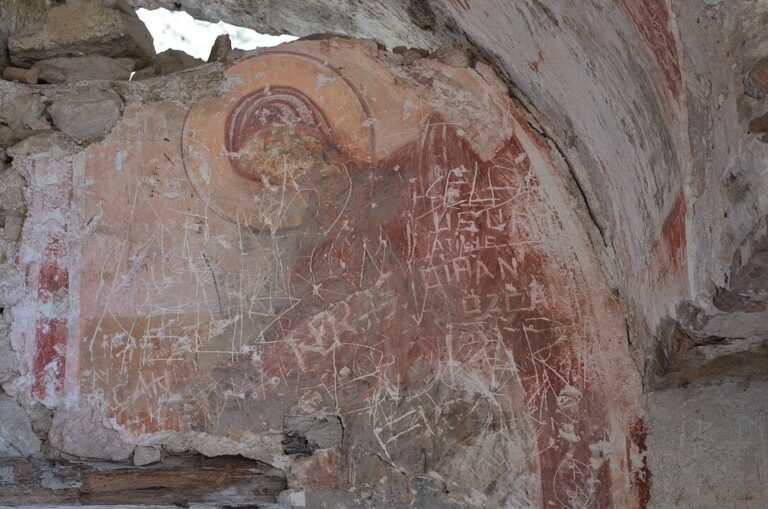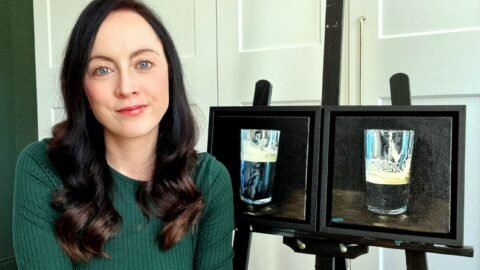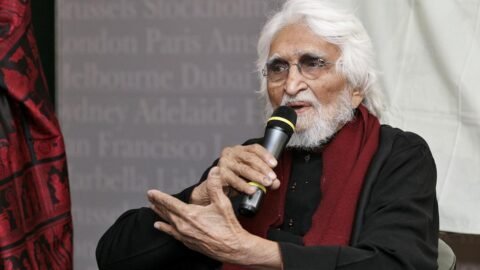
The 700-year-old Byzantine church at the Balatlar Building Complex in the ancient Greek city of Sinope (Greek: Σινώπη), in present-day northern Turkey, has been restored. The church now reveals vivid wall paintings with scenes from the Bible, offering visitors a rare glimpse at the region’s Byzantine and Orthodox Christian heritage.
The excavation, supported by the Ministry of Culture and Tourism and Mimar Sinan Fine Arts University, is now in its 16th year. Archaeologists have uncovered striking finds that trace the city’s story through antiquity and the Byzantine era.
Discoveries include 1,600-year-old mosaics, a Roman Imperial bathhouse, fragments of sculptures, animal-shaped objects, and dozens of tombs.
From Roman bath to Byzantine church
Professor Gülgün Köroğlu, who leads the excavation and teaches art history at Mimar Sinan Fine Arts University, explained that the site was originally built as a Roman bath. Parts of the structure were later converted into a church. The restored section, she said, was used as a place of worship during four separate periods.
🏛️ Rektörümüz Prof. Dr. Şakir Taşdemir, Balatlar Yapı Topluluğu kazı alanında incelemelerde bulundu.
📌 Kazı Başkanı Prof. Dr. Gülgün Köroğlu, yürütülen çalışmalar ve gün yüzüne çıkan eserler hakkında bilgi verdi.
✨ Balatlar kazısının, bölgenin kültürel mirasına ışık tuttuğunu… pic.twitter.com/5sLL7mtVUd
— Sinop Üniversitesi (@sinopuniversity) September 12, 2025
The church began functioning in the 13th century under Byzantine influence and remained active until 1924. Its closure came after the population exchange between Turkey and Greece, when the Greek Orthodox community of Sinop was forced to relocate to Greece. Afterward, the building fell into private hands and was used for tobacco drying and as a workshop until 2010.
Restoration saves Byzantine frescoes
Experts have worked to restore the building for over a decade. Repairs have stopped water leaks, reinforced the structure, and saved the fragile frescoes. “We have restored the exterior and architectural elements over the past 16 years,” Köroğlu said.
“The wall paintings were severely damaged, so we repaired and preserved them. We also constructed a protective roof.”
The restored artworks now showcase Byzantine religious imagery rooted in Greek Orthodox tradition. “At the top of the apse – the semicircular recess behind the altar – Jesus is depicted seated on a divine throne, conversing with Archangels Michael and Gabriel on either side,” Köroğlu explained.
Below this, there is an image of Virgin Mary with one hand visible, shown with her arms outstretched as if embracing humanity.
Other walls show clergy wearing pilgrim badges, representing key church figures who shaped Christian practice and ceremonies. Finely detailed images of saints, including female saints, recall the style of portable icons common in the Byzantine world.
Greek seafaring traditions etched in graffiti
Alongside the Biblical scenes, the walls also carry ship graffiti. Sinop, founded by Greek settlers from Miletus, and originally named Sinope, was one of the Black Sea’s most important ports in antiquity and the Byzantine era.
Sailors carved ships into the church walls before setting out on dangerous voyages, praying for protection from storms and leaving behind a record of their journeys.
Biblical scenes, including Abraham’s sacrifice of Isaac, appear alongside depictions of saints believed to heal illnesses. Köroğlu said the paintings also reflect a strong theme of fear and victory over the devil, a central concern in Christian theology.
Shared heritage on the Black Sea coast
With restoration nearly complete, the Balatlar church now stands as a monument to the region’s shared history. From its Greek and Roman origins to its Byzantine use, the site reflects centuries of cultural exchange. For Turkey and Greece, it remains a visible link to the communities that once shaped life along the Black Sea coast.





